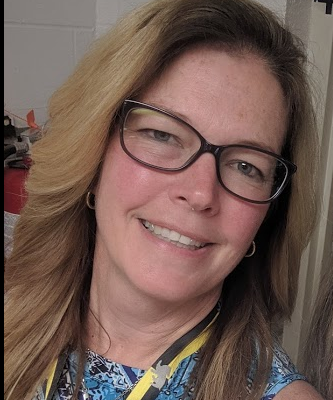Our students need to see themselves as readers. Reading needs to be part of who they are and, fortunately, our ever-changing digital world makes this endeavor both possible and more interesting with each passing year. As more electronic resources dedicated to books and reading pop up, we are presented with increasingly impressive user experiences. Information is packaged in ways that are more appealing and relevant to young readers and website authors are using engaging tools to hook our students on reading.
As educators, we have an exciting opportunity to lead our students toward reading materials that not only support specific curricular needs, but that also nurture in them a sense of discovery as they develop their individual identities as readers. We can do so in part by utilizing the interactive tools, targeted lists, and thoughtful resources freely available on the Internet, and by pointing our students and fellow educators toward those that are most useful.
The following list includes a few of the wonderful sites available for kids to explore book reviews, genres, and eBooks on their own. The list also aims to provide adults with resources to help students experience fulfilling reading experiences.
1. International Children’s Digital Library (ICDL)
ICDL’s goal is “to build a collection of books that represents outstanding historical and contemporary books from throughout the world.” This website’s collection of children’s books from around the world is available to read immediately online. The free website can be used for many purposes. For example, teachers can share with students what a book published in another country looks like. Teachers can connect an ESL student to books in his or her home language. Finally, teachers can share the site with parents as a way to have students explore books at home on an interactive and kid-friendly platform. Top access a host of multicultural books, a user can simply hover over “Read Books” and click on “Simple Search,” “Books by Country,” or any other categories of interest.
Recommendation: Elementary
http://en.childrenslibrary.org/
2. Scholastic Stacks
Scholastic has The Stacks running in Beta form only, but the site promises to be a safe place for kids to hang out on the Internet. Each student can create a profile with an avatar and their favorites (but without personal information). Teachers and parents will be more interested in the “Book and Authors” and “Blog” sections. Kids can click their way through reviews according to genre and read blog posts about interesting subjects related to reading and writing. Though there is a games section, Scholastic focuses most of the site’s content on literacy: titles, authors, movies based on books, and writing. Beware: Though students don’t use their real names, they can “Friend” one another and connect with people they don’t know in real life. If Scholastic accounts are used, it’s important to conduct an Internet Safety mini-lesson.
Recommendation: Middle grades
http://www.scholastic.com/kids/stacks/
3. Megamouse Books
Have you ever wished for a website with multiple short stories available for students to read in one sitting? Megamouse Books is that website. In 2012, Emma Laybourn, a British teacher and librarian, created the site in order to write and provide free children’s stories, series, and in eBook format. If your classroom or library has access to portable devices, you can download stories directly onto them through apps like Kobo, Amazon, iBooks, Kindle, and Nook. Best of all, for the site is simple for students to navigate on their own.
The selection is limited, but many stories are very short, and Ms. Laybourn appears to be writing new stories regularly. Shorter tales are available for younger readers, and older readers have the option of previewing content on the site before downloading for free or purchase (depending on the title).
Recommendation: Elementary grades 2+, middle grades
http://www.megamousebooks.com/
4. Reading Rants
Jennifer Hubert writes this site for teens, to teens. She is very clear that teachers, parents, and librarians are welcome, but she does not provide recommendations for a book’s intended age range or level, as she believes that teens should not be restricted by what other people say is the right reader for a book. Therefore, Reading Rants is perfect for teen readers! It offers reviews written with teens in mind and also provides numerous links for further exploration, whether to useful archived blog posts or author websites. One of the website’s best features is a list of links to other review sites for teens allowing readers to connect with many already-evaluated book review websites. Reading Rants is not flashy but it has a beautiful format and the purpose is clear: find a good book.
Recommendation: Upper middle grades, high school
http://www.readingrants.org/
5. KidsReads/TeenReads
The Book Report Network publishes a very useful collection of websites for different types of readers, including kids and teens. These sites feature reviews, author information, book lists according to series or interests, reviews of to-be-published books, contests, polls, and other subject-specific posts. Students will have fun exploring the site and easily accessing recommendations for books. Both sites (KidsReads and TeenReads) provide access to many genres and reading levels, this ensuring that myriad interests and needs are met. The content changes often and the contest and poll features give kids a reason to keep coming back to see what’s new. KidsReads sometimes offers age recommendations, but the majority of reviews simply offer the book’s length and genre as far as specifics go. Kids and teens will enjoy the tone of both websites and the ease of navigation.
Recommendation: KidsReads: Elementary, middle grades; TeenReads: Upper middle grades, high school
http://www.kidsreads.com/
http://www.teenreads.com/
6. Choices Reading Lists
For more than 35 years the International Reading Association (IRA) has turned to children, young adults, teachers, librarians and reading specialists for their opinions and feedback in compiling annual, annotated lists. Books are chosen among the recently published and selected based primarily on how enjoyable they are to students. The IRA produces three lists annually: Children’s Choices, Young Adults’ Choices, and Teachers’ Choices. All lists include books reviewed by readers representing regions across the United States; an appealing layout incorporating cover illustrations and helpful book summaries. Through these lists, the IRA aims to connect young people with pleasurable reading experiences.
Recommendation: Teachers, parents, student of all grades
http://www.reading.org/Resources/Booklists.aspx
7. BiblioNasium
BiblioNasium offers a visually appealing, user-friendly social networking environment for students ages 6–13 where they can create and share virtual bookshelves of the books they read, recommend, or plan to read. They can also write reviews and log reading progress. Although parents can also set up an account for their child, BiblioNasium enables teachers to set up a virtual community, which they can then use to keep informed of student reading progress and share recommendations or required reading with both parents and students. Teachers are encouraged to invite parents to join the classroom with a provided template for easy inclusion.
Recommendation: Elementary and lower middle teachers, parents, students
https://www.biblionasium.com
8. Cooperative Children’s Book Center (CCBC)
The Cooperative Children’s Book Center (CCBC), a library of the School of Education at the University of Wisconsin, offers lists designed to connect young readers with high quality titles organized to meet specific interests and learning needs. Lists topics range from sports, the arts and the environment, to more complex concepts, such as Sense of Place and Sense of Self, in which books listed reveal a physical setting that somehow relates to the internal journey of its characters. Each list (there are 50+) includes an introductory statement with details on the selection and organization of the list, recommended ages for each book, and links to cover art and thoughtful synopses.
Recommendation: Teachers, parents, and students of all grades
http://www.education.wisc.edu/ccbc/books/detailLists.asp?idBookListCat=7
9. Reading Rockets For Parents
The mission behind Reading Rockets, an organization funded in part by the U.S. Department of Education, is to directly target struggling readers and provide the necessary resources to help them flourish. The site addresses that mission in part by providing parents of young readers the opportunity to access exciting books as well as share with their children more than 100 interviews with authors and illustrators.
Teachers will find the site particularly useful as a recommendation for parents looking to help their kids become active readers. The Parents section of Reading Rockets provides parents of early elementary students with a user-friendly navigation of themed book lists, articles aimed at encouraging reading, and multi-media author interviews.
Recommendation: Early elementary parents
http://www.readingrockets.org/audience/parents/
About the Authors
Norah Connolly-Djemazi is the librarian at the Argenziano School (K-8) in Somerville, MA. She enjoys teaching students how to navigate this overwhelming digital age but her favorite thing is connecting readers with the perfect book that keeps them coming back for more.
Emily Lappen Rocha is the librarian at the Arthur D. Healey School (K-8) in Somerville, MA. She welcomes the opportunity to enrich learning through integrating emerging technology tools.
 Print this post
Print this post




